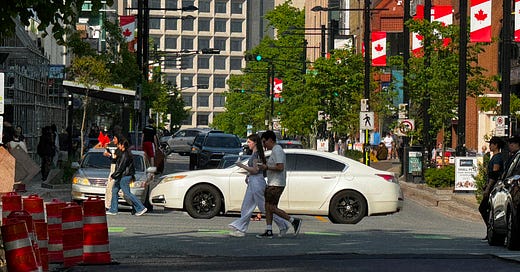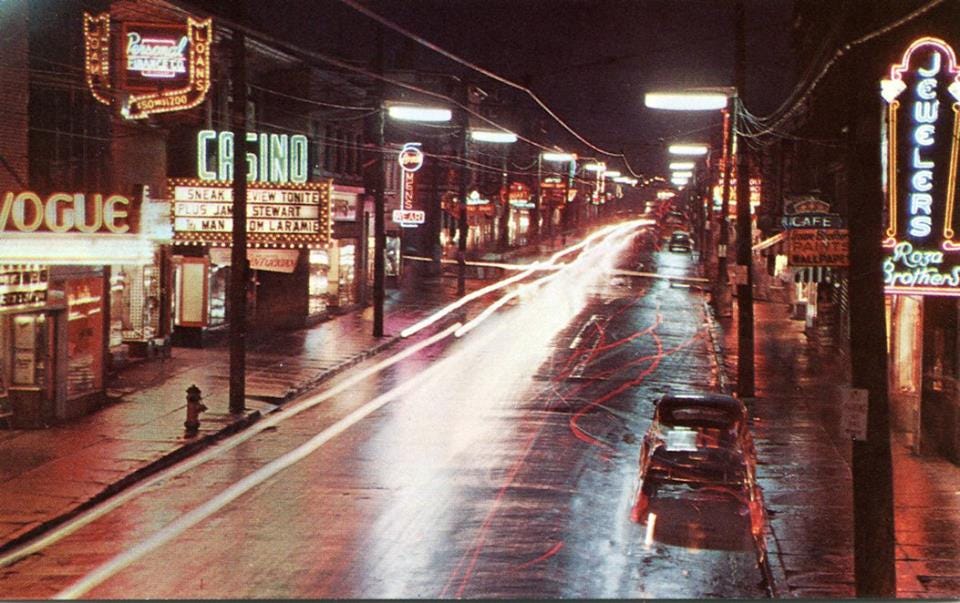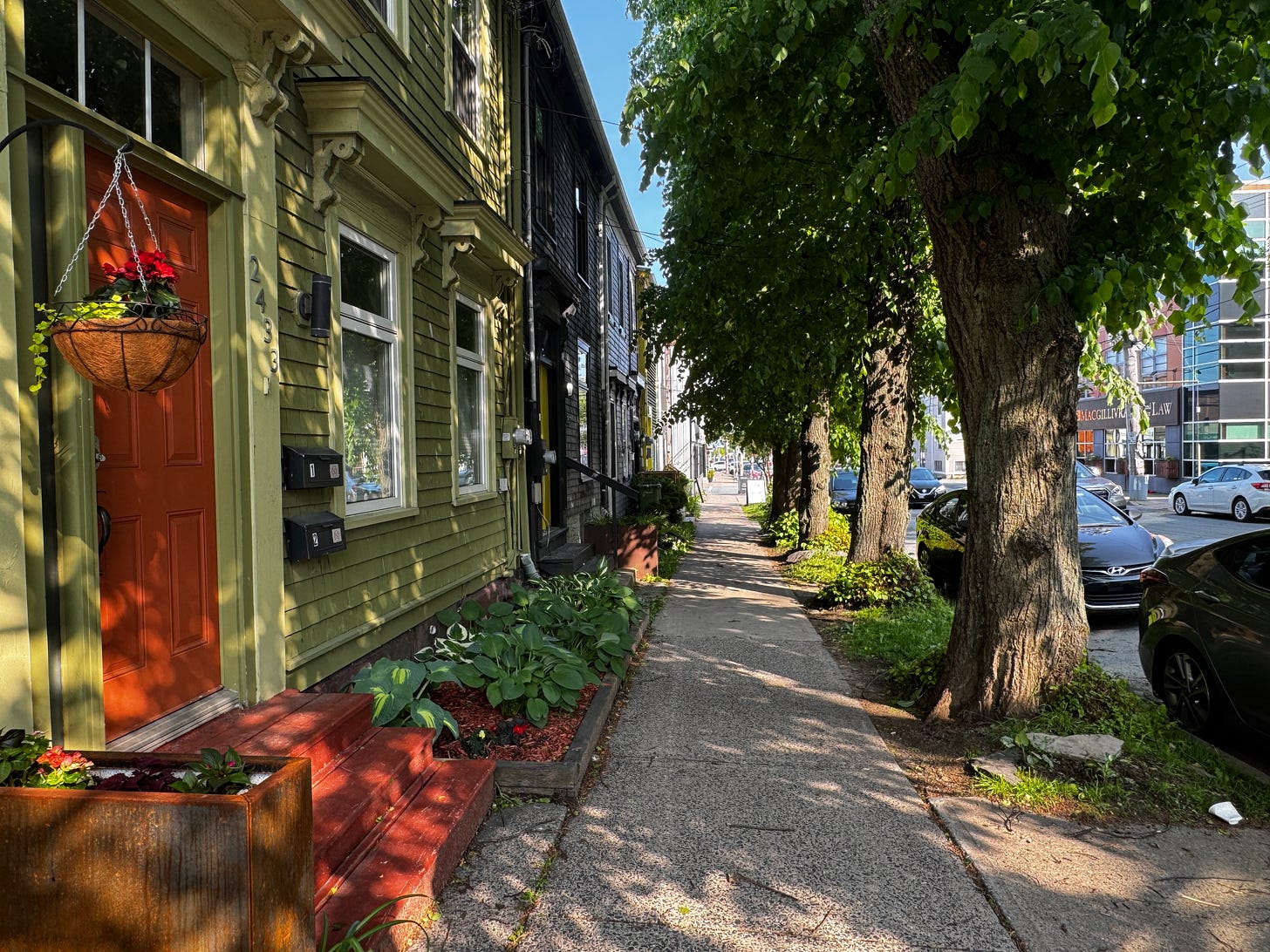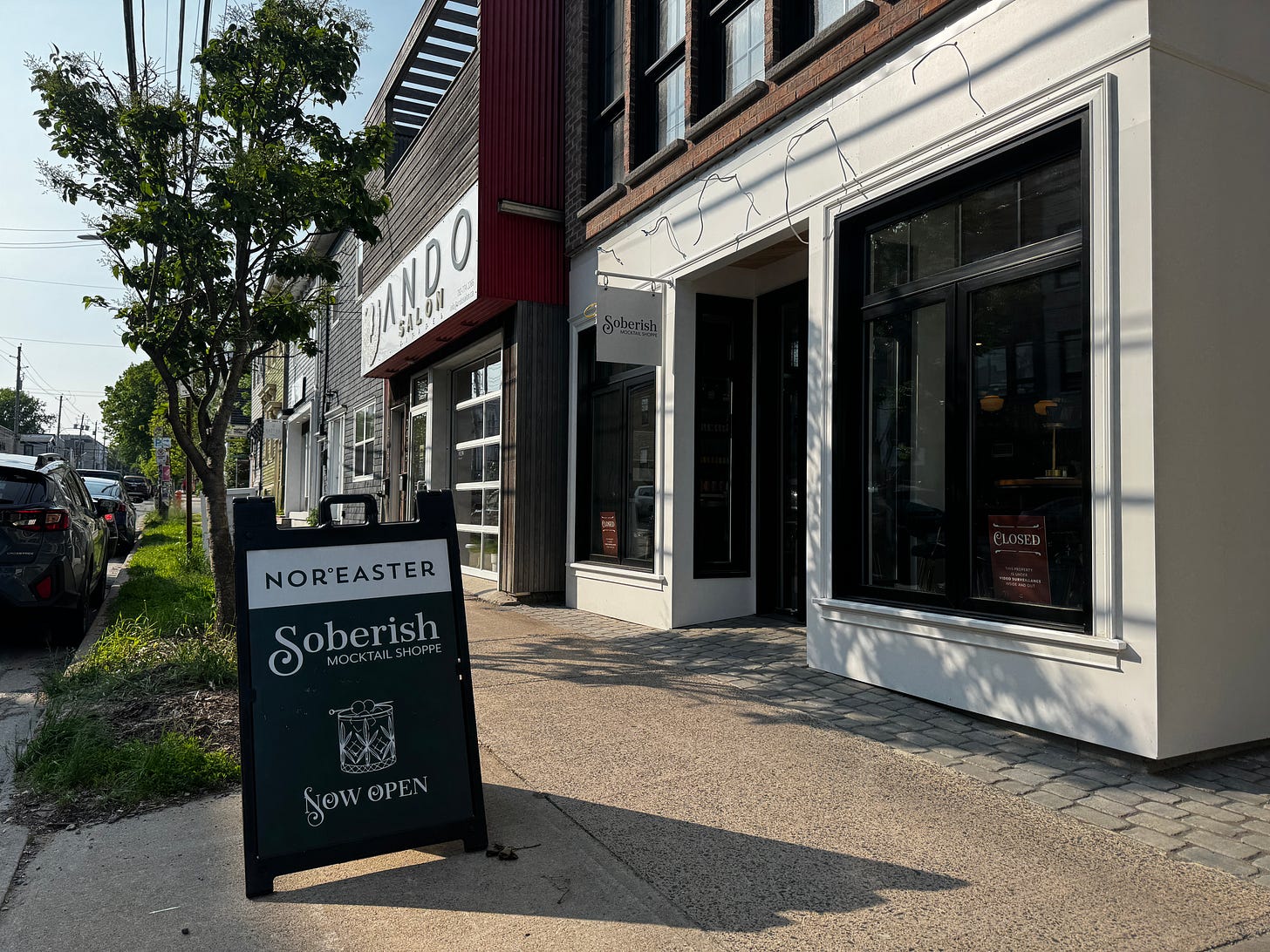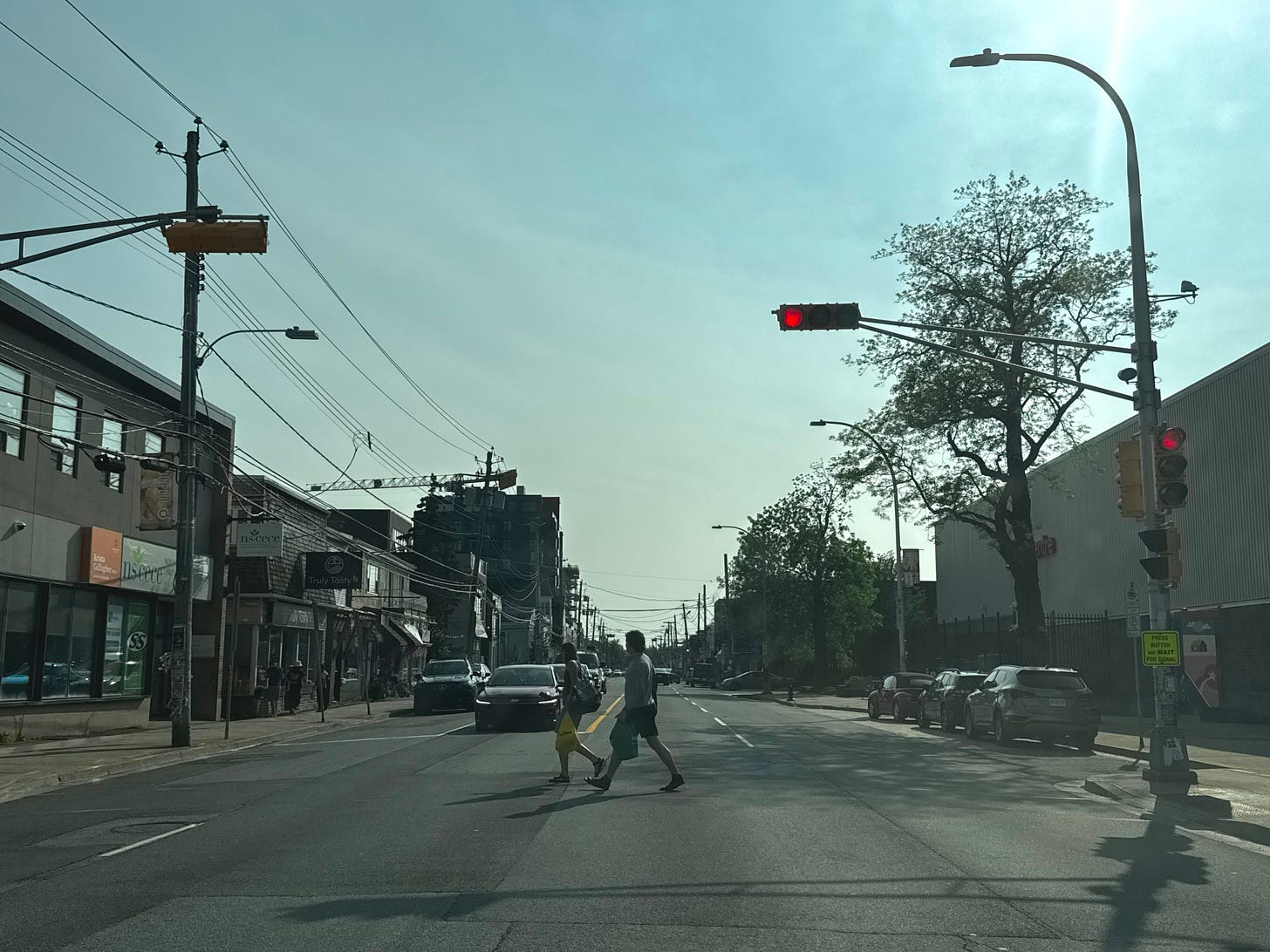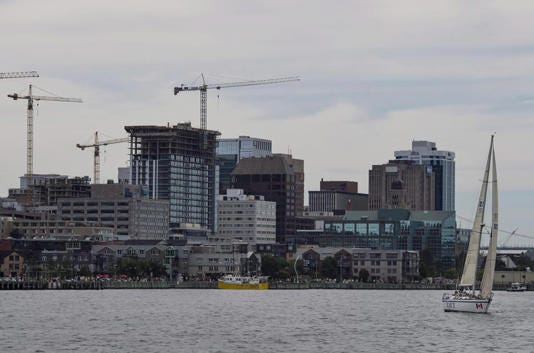The Proof Is In the Playground
When the 8 year old asks, "Who lives in 'the Towers' Papa?", I don't have a good answer.
Nobody goes downtown anymore. It’s too crowded.
The original context of “Nobody goes there anymore, it’s too crowded” is typically said to be a classic quip Yogi Berra made about a New York restaurant—Ruggeri’s, or a popular Italian place in St. Louis, though some say it was the Copacabana in Manhattan. Like many Yogi-isms, it wasn't recorded in a formal interview but passed into folklore through sportswriters and fans.
The line was meant to be a joke about popularity: a place had become so popular in some sense, so packed with people, that the speaker and their crowd had stopped going. A paradox. A commentary on trends, crowds, and perception.
In just a few weeks the visitors and tourists will come and jumble the whole town up. They’ll be looking for the heart of the thing just like tourists and visitors have done since towns were first invented. But they won’t find that in Halifax. Even today, with a clear view of who lives where and what is where, there’s no way to see the centre of the thing. In historic Halifx it used to be the Grand Parade. When I was a kid it was the station and Cornwallis Park. I’m sure every past generation remembers their centre. But today? It’s hard to imagine the disappointment of a cruise ship visitor who leaves the dock and walks in almost any direction.
The town, our little 3 by 7 km almost island without a centre, is still here. Overwrought and overwhelmed as it is, it still means a lot to me.
Halifax: Children and change
When I was a kid, my mom would talk about how fancy Gottingen Street used to be—nice shops, people dressed for town, proper civic pride. And how awful it was, in contrast, to have to go "downtown," by which she meant Barrington and Spring Garden, or God forbid, the train station, where the hookers, sailors, and dockworkers congregated. To her, downtown meant danger and disrepute.
That was not my experience.
By the time I was growing up, Spring Garden Road had become the fanciest promenade in Halifax. Boutiques, bookshops, clubs, and cafés. A place to see and be seen. As polished and well-heeled as any main street anywhere.
But this weekend, walking the city with my brother, I noticed something that felt like a magic trick done in reverse. The wealth had moved—but no one announced it. The city’s glamour has shifted north. Agricola Street, not coincidentally the lowest built remaining commercial street in the city, once gritty and overlooked, is now where the rich pretend to be poor. They sip artisan coffee in repurposed laundromats and buy antique hammers they’ll never use. It’s a little affected, yes, but there’s a kindness to it too. A sweetness.
Meanwhile, the actual poor are on Spring Garden now—rummaging through what passes for "streetscaping," lingering at corners and looking for the rich people to “help them out”. But the passersby they’re looking for—the shoppers, the strollers, the well-off and well-dressed—aren’t there anymore. They’re both blocks and worlds away.
It reminded me of something that happened in Cairo years ago. I was sitting in a café with friends after working on a desert archeology project ( a brewery business uncovered in the workers’ village near the Great Pyramid). “Aren’t you worried about the war and violence here?” I asked. My friend laughed: “The war? It’s like three blocks away! You want to go see it?” I didn’t. But the point stuck. Even in chaos, geography creates the illusion and reality of different spaces. In cities, a few blocks might as well be a hundred miles.
Dorothy, my daughter, brought this home earlier in the week when she asked me, totally unprompted, “Do you know anyone who lives in The Towers?” That’s what she and her friends call the new urban and up buildings rising along Quinpool road. Big. Shiny. Unmissable. As people who have never known another neighbourhood, they naturally assume these belong to them too. To us. But they’re not clear on what they are. So they talk about the lights (which they don’t like.) The colours (that they don’t like). and the connection between the buildings and the “Cyber Trucks”, which they loath and conspiratorially assume some connection.
I asked her if any of her classmates lived there.
She said no. Not one. No one in her school, she assured me, would live there. It was more a mix of school pride, hope, and bravado than fact.
”Do you know anyone who lives up there Papa?”
That struck me. I’ve lived on my own in this neighbourhood since 1985. Forty years. Now it’s not just me. We’re a friendly family. We know our neighbours. We’re in the shops. At the parks. Walking the streets. We love our relations with the neighbourhood and the people in it. All those light connections with the people at the shops, the old folks walking dogs, and of course, the immigrants, mean a lot to us. Even the people we call homeless are not neighbourhoodless. They’re part of the people we know. If we don’t know anyone who lives in The Towers, who does?
The truth is, I can think of a few people. I do know some pensioned professionals around town who live in the condos. Sort of. A couple of investors. But for most, the condos are pied-à-terres—second or third homes. Places to perch, not belong. I never see these folks in the neighbourhood. Not at the school. Not at the church. Not even on the street. I don't see them much except when I'm invited over to talk about this or that political issue.
And so, it pushes me further to wonder what the heck we’re going for here: the new buildings, the ones supposedly anchoring “complete communities,” are not communities at all. They’re assets. Airbnbs. Places to shelter capital. In a time of crisis, the answer we’ve given is height. But what happens when there’s no connection between the ground and the people looking down from above? How do these places eventually connect to the community, the neighbourhood, and most importantly the institutions: the school, the church, the shops?
This isn’t just a Halifax story. Cities across Canada and the U.S. are experiencing the same vertical sleight-of-hand. We build towers and say we’re building neighbourhoods. But the proof is in the playgrounds. In the grocery line. On the crosswalk. If the people in the towers aren’t there with us—shopping, learning, aging, worshipping, living—then what, exactly, have we built?
And what kind of city are we really becoming?
The Proof Is in the Playground.
We can call it density. We can call it growth. We can call it urban vibrancy, complete communities, or whatever the latest planning gospel prescribes. But none of it means much if the people in the towers don’t show up where real life happens—on the sidewalks, at the corner store, in the pickup lane after school.
You want to know if a neighbourhood works? Don’t look at the renderings. Don’t count the cranes. Look at the playground.
Are the kids from the towers playing with the kids from the street? Are there birthday invitations crossing income brackets? Are there scraped knees, shared snacks, and shouts of joy from kids who don’t care what floor anyone lives on?
Because if the answer is no—if the kids don’t mix, if the parents don’t meet, or worse, if there simply are no kids—then we’ve built something hollow. A city that doesn’t reproduce its own community spirit can’t sustain itself. What looks like growth might just be a placeholder. A holding pattern. A vertical dead end.
In cities, geography is destiny. And we’re drawing new lines without even noticing. The real question isn’t how high we can build, but whether we’re still building places where people belong to one another.
In the fullness of time, a city without children, connected kids, is a city without a future. And the proof, as always, is in the playground.


